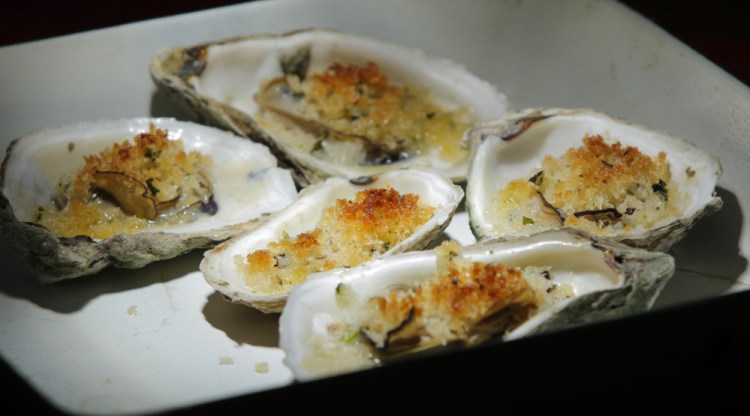When you ask a handful of Maine-based sustainable seafood experts what they would serve for a Christmas Eve Feast of the Fishes celebration, they say locals are not wanting for choice. In fact, you’d better be prepared to bypass the southern Italian menu of just seven fishes and opt for the Polish custom of serving as many as 12 courses, one for each apostle.
Regardless of whether you take holiday cues from Naples or Krakow, the fish-centric feast as practiced in both places takes place after sundown but before midnight. The meal centers on fish because, for Roman Catholics in generations past, Christmas Eve was a holy day of obligation: Rome dictated the day must include Mass but not meat.
Sustainable seafood-centric celebrations, regardless of how many dishes of fishes you serve, are no problem here in Maine. It’s more a matter of knowing which ones to buy at this time of year and why.
It’s no surprise that Togue Brawn, owner of DownEast Dayboat in Hancock, recommends scallops. She works with five Maine fishermen who harvest scallops within 3 miles of the Maine coast, and she sells them to customers within 24 hours of the mollusks being hauled out of the water during the state’s short winter scallop season.
To make sure you’re getting Maine scallops, buy them from a reputable dealer or, ideally, directly from the fisherman, explains Brawn. A guarantee of origin and freshness provides the green light to serve them as Brawn suggests: raw, thinly sliced, with Thai chili paste, lime juice, crispy fried shallots and cilantro. “I like to serve this right on the scallop shell,” Brawn says.
Dana Morse, a scientist with Maine Sea Grant and the University of Maine Cooperative Extension, explains that farmed oysters and mussels are good for Gulf of Maine marine life, as they eat phytoplankton and remove nitrogen and phosphorous from the ecosystem, thereby improving water quality for the rest of the fish in the sea.
These bivalves are particularly good to eat this time of year, when they are plump and sweet, packed with the glycogen stores they need to live in colder water (See recipe for Broiled Oysters with Truffle Butter.)
But Morse is also quick to point out that smaller fishes, like herring and redfish, should be considered. Eating these Gulf of Maine fish will help create a retail market for them that pays the fishermen a better price than what they can get when they are sold as bait.
Morse suggests preparing the herring like Moroccan sardines and the delicate tasting redfish raw, either as sushi or sashimi.
Ben Martens, executive director at Maine Coast Fishermen’s Association, says Maine lobster is always a good choice. But he also suggests that Jonah crab be on the menu, because it has long been by-catch in the lobster industry and should be eaten rather than tossed. Both claws and picked meat are available at most local fish shops and Hannaford fish counters.
As for flaky white fish, Brawn says she’d serve corned hake, an old Maine dish that involves slowly cooking finely chopped salt pork until the meat is crisp and the fat is rendered, while poaching sustainable hake fillets and steaming new potatoes.
To serve, you smash a few potatoes on the plate, slide on a piece of hake, drizzle some rendered fat over it and garnish the dish with the crispy salt pork.
Martens suggested American plaice, a species of flounder that is one of the staples of the diminishing groundfish fleet in Maine. “Fishermen are seeing a huge uptick in this species on the water,” said Martens, adding that it can be used in any recipe calling for haddock.
Cooks should also consider buying Maine-caught cod, argues Martens.
Since Maine fishermen work within a management system that uses science to set quotas on species, fish caught within those quotas are sustainable.
Because there has been so much publicity about cod stocks declining, Martens says people wrongly shy away from all cod.
This lack of sales has caused the price of local cod to drop, which hurts many Maine fishermen who catch cod while targeting healthier populations like pollock, haddock and American plaice.
“We should feel good about buying local cod,” Martens said, because supporting Maine fishermen during the holidays, and throughout the year, is the best way to ensure a local seafood supply going forward.
CHRISTINE BURNS RUDALEVIGE is a food writer, a recipe developer and tester and a cooking teacher in Brunswick. Contact her at: cburns1227@gmail.com.
Send questions/comments to the editors.




Comments are no longer available on this story